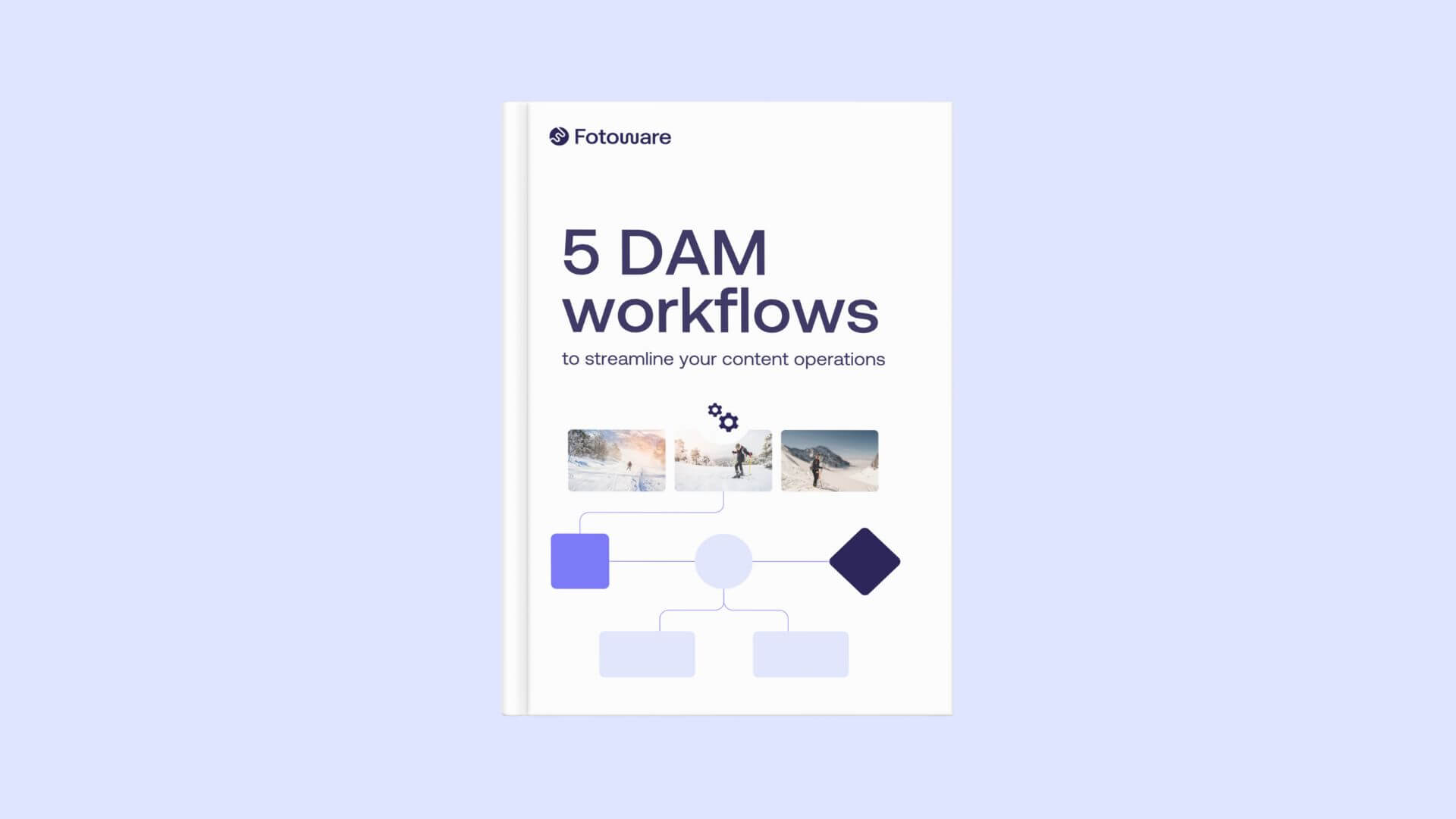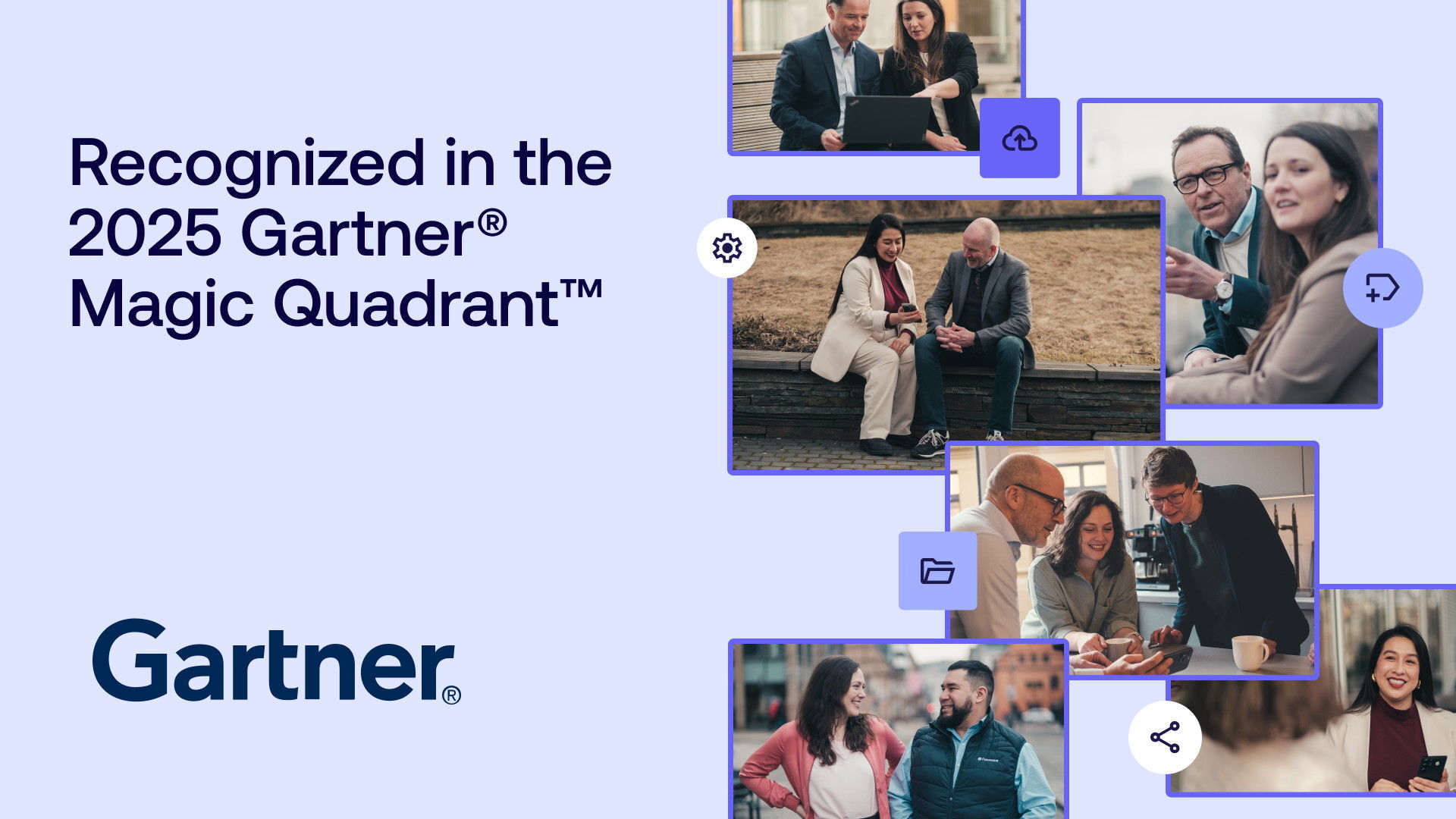
5 common challenges easily solved with Digital Asset Management
If you’re working with any form of content production and distribution, you’re probably familiar with the term Digital Asset Management (DAM). In short, a DAM is an integrable system for managing digital assets, such as images, graphics, videos, etc.
A DAM system is much more than your traditional media bank and solves many challenges that traditional cloud storage can not.
In this article, we’ll take a look at 5 of the most common challenges related to content management, explaining how a DAM system can easily solve these.
Challenge 1. Files get lost or are difficult to find
When using a traditional folder structure, you often need to know where exactly an asset is stored in order to find it. For example, you may be looking for the organization’s latest PowerPoint template but don’t remember if it’s stored in the folder for PPTs, Sales Material, or Company Templates.
Another challenge with traditional storage is employees and partners storing digital assets locally or in shared folders, making it difficult to get access when needed.
For example, you may be working with an external design agency sharing a folder hosted in Google Drive that only a couple of people have access to.
Or, you may want to locate video clips used in a previous project but are unable to find these due to them being stored locally by someone no longer working in the organization.
LEARN MORE: 6 ways to search and find files in Fotoware
Solution: Build a system based on metadata
In order to have control of all files, it’s essential that they are stored and managed from one central repository. No matter if this repository is located in the cloud or on local servers, you need a proper system in place to ensure that everyone can access the files they need through it, as well as upload new assets that come along.
A DAM system can function perfectly as such a hub. Since it’s based on metadata, you can offer team members multiple ways of searching for content - steering away from fixed folder structures.
Learn more: Metadata and Metadata Management - What it is and why it matters
In short, metadata is data about your data and is essential to any DAM. When structuring digital assets using metadata, system users can find assets by freely searching for relevant keywords or using customized taxonomies to filter out irrelevant file formats or other categories.
Read more about metadata best practices. >
Challenge 2. Content collaboration is inefficient and unreliable
Oftentimes, content production and distribution require a lot of collaboration. For example, you may need approval from specific individuals before publishing an image or a design. Another example may be visuals made in cooperation with externals, often resulting in files and notes being sent back and forth through emails and zipped folders.
LEARN MORE: 6 challenges marketing teams face when managing digital assets
Additionally, many digital assets are relevant to people outside the communications team, for example, company logos and sales materials. These assets must be easy to locate but should also be revoked once they're no longer relevant to avoid people using outdated materials.
Solution: Store all visuals in an interactive hub
As mentioned earlier, a DAM can function as a brand hub for the organization, enabling everyone to find the assets they need when they need them. With advanced user settings, you can easily tailor who gets access to what and communicate the assets' status by using visual markers. This way, you don’t need to worry about team members using outdated or unapproved content while making it easy for them to find what they need without asking around.
Most DAMs also come with the possibility of adding notes to your assets, enhancing collaboration further. They are also set up with album functionality, enabling you to easily share assets externally without having to rely on third parties, such as Dropbox or Wetransfer.
LEARN MORE: Digital Asset Management vs. Cloud storage - what's the difference?

Bonus tip: Build a public archive for external users
While a lot of organizations only allow official team members full access to their DAM, many also take advantage of the advanced user-configuration features, creating semi-public archives to share with externals or completely public archives to share with the world. These can be configured in great detail, for example, enabling visitors to download watermarked versions of selected images.
We see more and more organizations using public archives, for example, open press archives or digital image collections, like this one by the White House Historical Association.
Challenge 3. Publishing content online is time-consuming
Keeping your website(s) up to date can be time-consuming. Especially if your online presence includes articles or newsletters, you’ll find yourself having to upload new images and graphics regularly, which often requires you to locate, check, download, and upload an asset before it can be used. While this may not be considered challenging as a one-time task, it’s definitely time-consuming if you publish content on a regular basis.
Solution: Integrate the DAM system with the CMS
By integrating your DAM with your Content Management System (CMS), you’ll build a direct link between your website(s) and your asset repository. This way, whenever you’re working on a blog article, landing page, or simply replacing a graphic, you’ll always have selected assets easily searchable and available through a web widget. The assets can be imported directly into the site without you having to download and upload them again, saving time and ensuring full control of your brand’s online presence.
Bonus tip: Use the API to build a content ecosystem with the DAM at the core
Most DAMs have an open API and can be integrated with a plethora of different systems and programs, for example, design software, product information management systems, project management systems, and many more. By taking advantage of this opportunity, you can build a customized content ecosystem with the DAM at the very center, making every asset available in the relevant software.
LEARN MORE: DAM Integrations - Build your content ecosystem
Challenge 4. Revoking visuals is a long and manual process
Whether it’s because the asset is no longer relevant, the license has expired, or for any other reason, you sometimes need to revoke assets from the repository. Without a DAM, this can be a cumbersome project, involving a lot of internal communications to ensure that the asset is removed from any active folders, collections, or campaigns.
Solution: Build workflows to manage rights, licenses, and approval status
With a DAM system in place, you can set up automated metadata-driven workflows, meaning specific actions are triggered once certain changes occur in an asset’s data. For example, you can create an automatic workflow revoking assets once an expiration date is reached or making assets available in your public archive once they are approved for this purpose.

5 essential DAM workflows
A guide to Digital Asset Management workflows that enhance efficiency, collaboration, and compliance.
Bonus tip: Attach consent forms to your visuals
If you have photos featuring private individuals, a specifically useful feature is consent management, enabling you to attach customized consent forms to your digital assets. This way, you can easily keep track of what type of usage a person has agreed to, and should the individual revoke his or her consent, this will be automatically reflected in the attached form.
Challenge 5. The system doesn’t scale
One of the main challenges for today’s enterprises is scaling content operations. With more content being consumed online and increased diversity of platforms and devices comes a greater need for efficient content production and distribution. Expectations are high, especially in terms of visual quality, relevance, and speed. Therefore, many organizations experience a consistently growing amount of content, and sometimes their existing systems can’t keep up with this increase.
Solution: Choose a DAM with content operations capabilities
Today’s DAMs should not just function merely as media banks. Instead, they should enable you to scale your content operations, seamlessly moving the right assets and data to the right places - at high speed.
If you invest in a DAM with advanced options for metadata, workflow configuration and an open API, chances are high that the system will be able to scale as your organization grows and the market changes.
Read more: The best Digital Asset Management software for your needs
Want to learn more?
Talk to one of our experts to discover how we can streamline your organization's content workflows.

.png)
